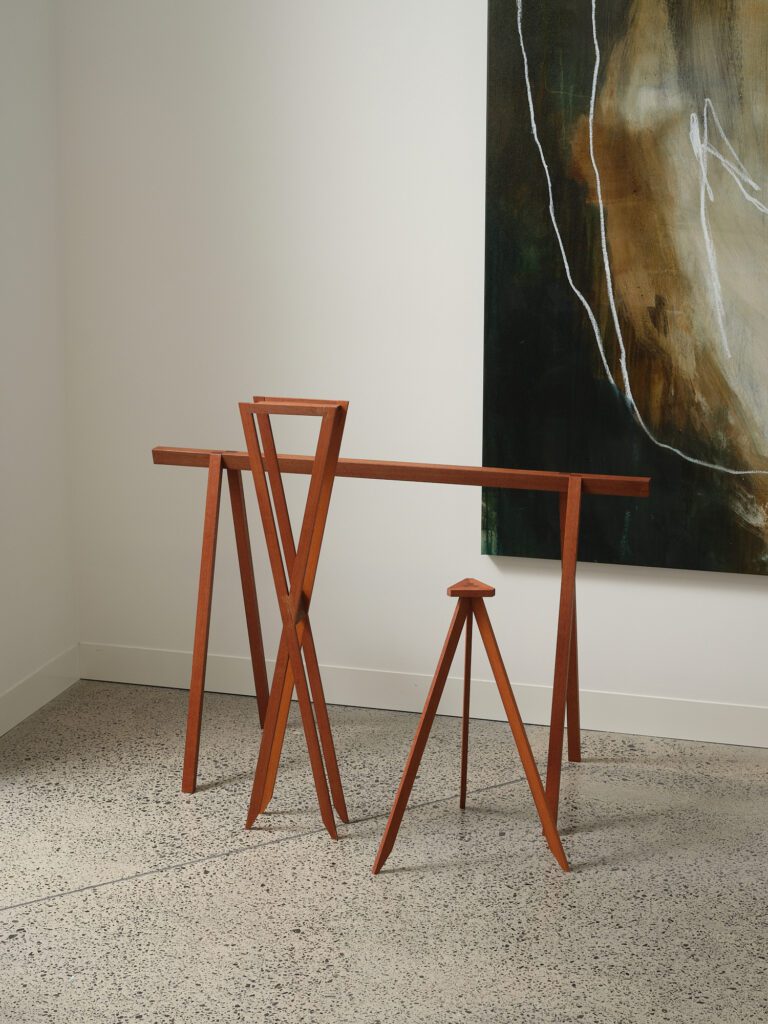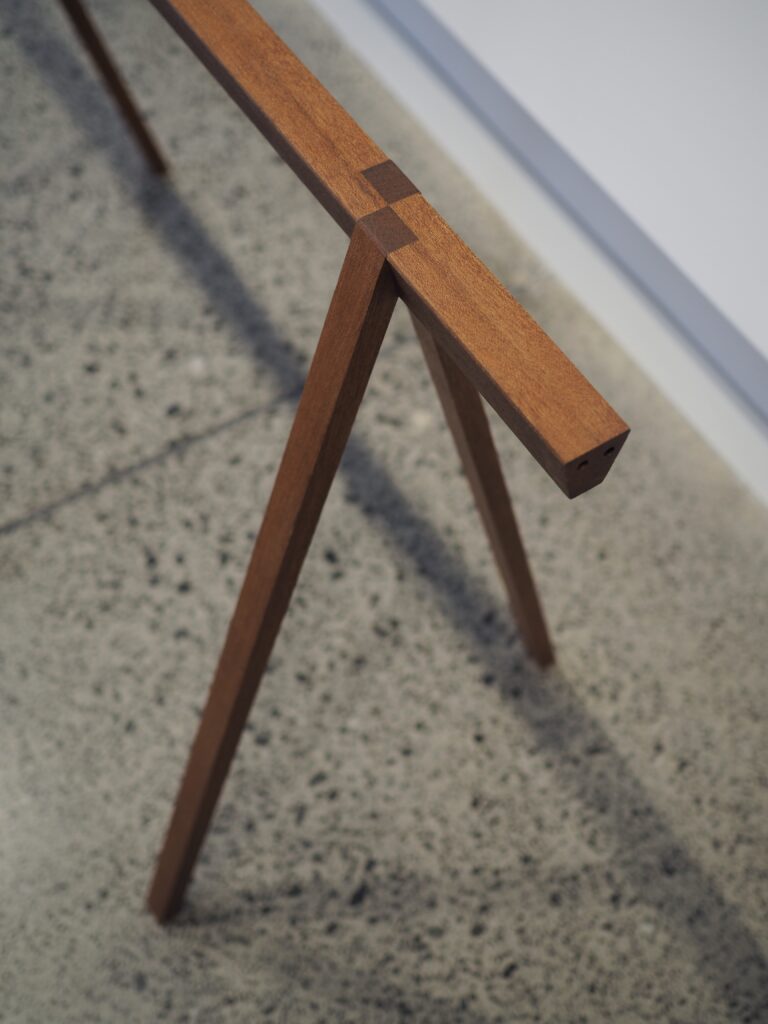The poetic collision between art and furniture; the tipping point from function to form; sculpture on the edge of rational and reasonable. These are the themes that RTA Studio founder Rich Naish explores in an ensemble of three pieces on show as part of an upcoming exhibition at FHE Galleries entitled ‘Almost’.

This initial trio, envisioned as the start of an ongoing series, is exhibited alongside abstract paintings by modernist Milan Mrkusich from his 1989 Chinese Elements collection. Rich calls it his “apprentice and muse moment”, but FHE Galleries director Kathlene Fogarty can see parallels.
She first met Rich as part of the Dunedin art crowd and soon had the talented graduate architect design a gallery for her: the G2 in Wellesley Street, a satellite to FHE, with Fingers Gallery sandwich in between. “It was a small, contemporary space, but he made it so adaptable,” she says. “In fact, he won an award for it.”
Kathlene still has a beautiful set of black-lacquer drawers that Rich designed for the G2. “That was 25 years ago, and I still have people asking if they can buy them.”
So, his ability to conceptualise something fresh and innovative is without question and while she acknowledges it’s a hard ask to stand next to the formidable talent of Mrkusich, his gift, she says, is to offer the audience a new ‘language’ of looking. “When I first saw some of Richard’s prototype pieces at his own home, I thought they were fantastic. Is it furniture or a piece for observation? I couldn’t put a word to them.”

Working from his home studio, Rich uses analogue and digital tools in the design and build stage of his process. Pencil sketches evolve into 3D computer models that enable components to be digitally cut and then honed by hand, and eventually hand assembled and finished. “The pieces explore a reductive approach to find the boundary of reason in the design of a domestic object,” he explains.
“Furniture must be a rational instrument fit for its function. It must have an appropriate scale and ergonomic order to its assembly. It is not a requirement of furniture to be poetic, but it must be reasonable. These pieces celebrate the boundary of reason in the design of a domestic object. When does a piece of furniture become unreasonable? When does sculpture become reasonable? The design process engages in a negotiation between the execution of appropriate scale and proportion, the integration of function and most critically, the poetic dialogue between both. In the end, they are almost many things without quite being any of them,” Rich says.

His material muse is reclaimed jarrah sourced from the Catlins in Southland: 50-year-old demolished stockyard timber which has been salvaged and planed through a thicknesser. “It has a variegated grain where the patina of water staining has penetrated the surface,” says Rich. “I like to think of it as New Zealand-seasoned Australian jarrah.”
From this trans-Tasman intersection in timber comes forms that embody an elegant curiosity that, Kathlene says, exhibits a strong intellect and deep love of the medium.
Almost furniture it may be. Get along and judge for yourself.
Almost is on display at FHE Galleries from 9 July until 13 August 2024.




